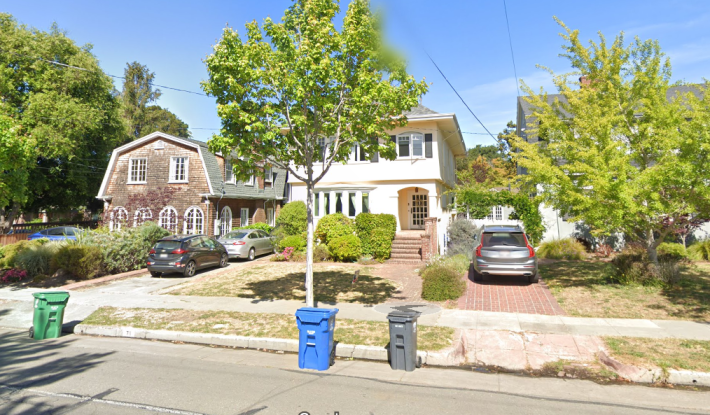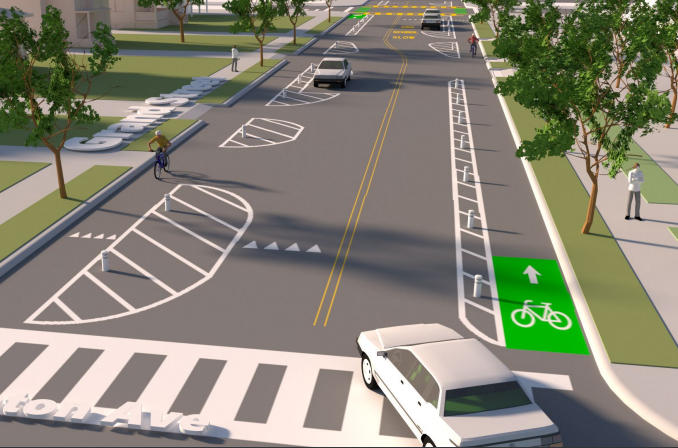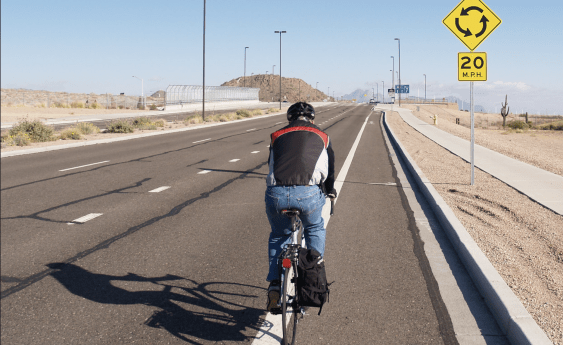Advocates in Alameda fought hard and won a city council vote last fall to get approval for protected bike lanes on Grand Street between Encinal and Otis. As Streetsblog readers will recall, the issue was contentious with wealthy homeowners on the street objecting to the required removal of some private car storage to accommodate protected bike lanes.
So, of course, a local resident has now filed a lawsuit (PDF).
Although there's nothing unexpected about this, advocates with Bike Walk Alameda were certainly aggravated. The move exemplifies "...the sheer naked entitlement these wealthy homeowners feel towards the public space next to their property," wrote Bike Walk Alameda's Denyse Trepanier, in an email to Streetsblog.
Trepanier pointed out that "Grand Street Neighbors," led by homeowner John Brennan, contains all sorts of misinformation about the Brown Act supposedly not being followed, the vote being supposedly unfair, etc.
But, of course, the only thing this is really all about is mentioned seven times in the lawsuit: parking.
And, just like with anti-safety NIMBYs in other fights, the red herring of access for the elderly and the disabled is shamelessly used. From the filing, which claims protected bike lanes will result in:
Reduced accessibility to homes, particularly as to disabled persons, persons with mobility problems and the aged who wish to remain in their home and reduce the ability of &:are-providers for such persons; (b) Reduced parking for homeowners, ADU residents and their visitors;
Of course, this is all utter nonsense. Houses on the street have ample off-street parking, with room for multiple cars, as required by zoning. Drivers might have to shuffle parking or clean out their garages (Quelle catastrophe!). That's in addition to the street parking that would still remain under the redesign.

As to the allegations that city processes were not followed, of course they were--in fact, it was pretty excessive, with hearings upon hearings to ultimately affirm the plan recommended by the city's transportation experts. Brennan himself testified in the process he's claiming didn't happen. It's available online: "He is a bicyclist, and he wants a balance of preserving parking and making it safer," he was recorded as saying in a workshop.
In Streetsblog's view, there's no "balance" between preserving parking and improving safety. How many people should be killed or maimed over a ten-year period to preserve a parking spot?
The answer is always zero.
Anybody who can't understand that is morally repugnant. Think of the damage done by Robert Anderson and Mary Miles, who jammed up the San Francisco bike plan on "environmental" grounds for years. Their court challenge was ultimately defeated, resulting in clarification of state environmental laws; but how many cyclists suffered injuries or were killed because of the delays?
"I hope that calling these people out now could have a possible dampening effect on these ridiculous arguments going forward," wrote Trepanier. "I would hope that it might cause people to think twice about opposing these great projects in the future, and instead support our most vulnerable road users."
As she added, it's in the court's hands now. Let's hope the courts give Brennan and his lawsuit all the respect and attention they deserve.





